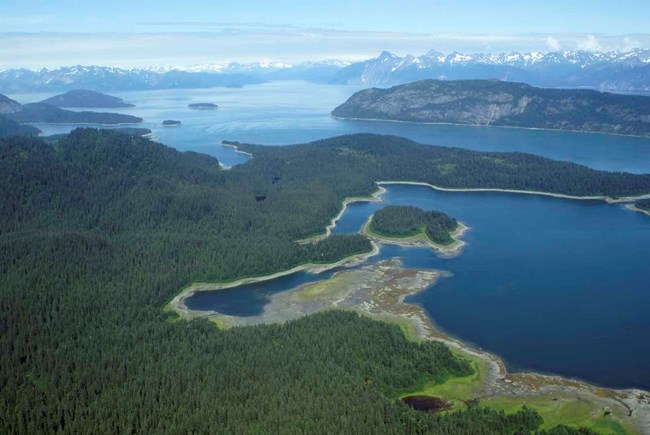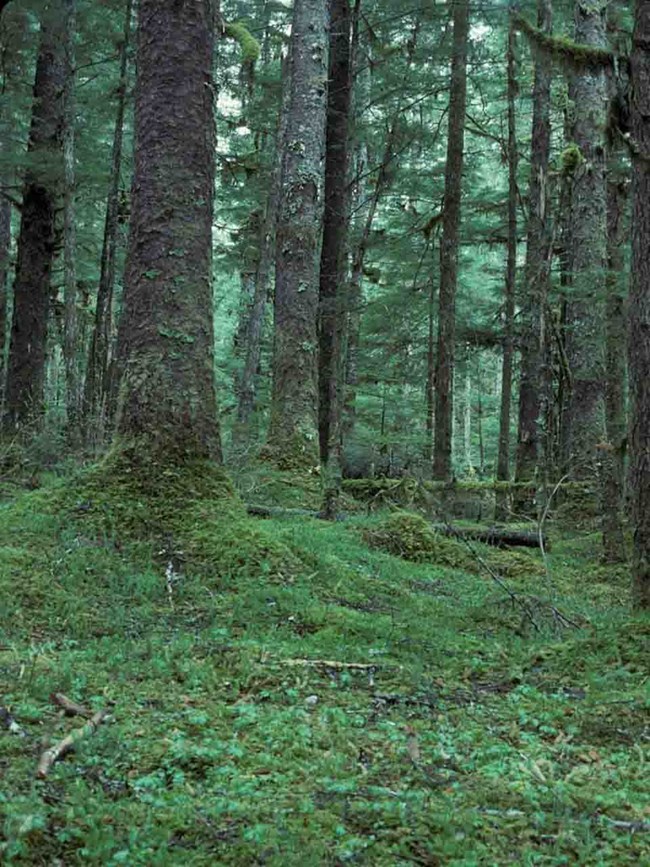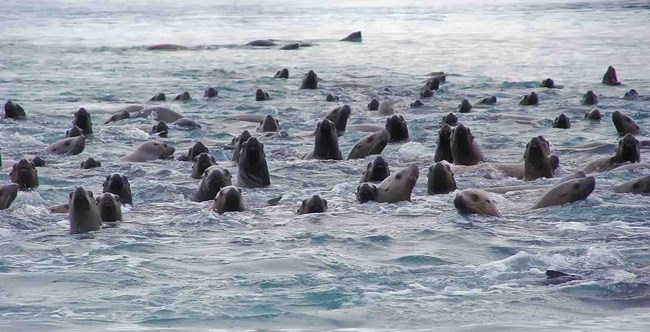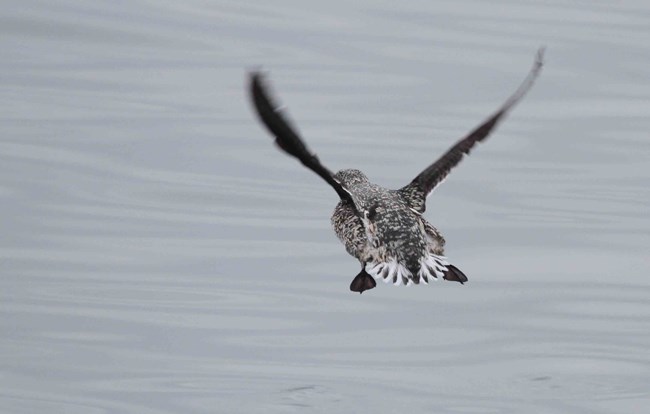
First designated as a national monument in 1925, Glacier Bay National Park and Preserve was expanded to 3,283,246 acres (1,328,700 hectares) by ANILCA in 1980. This Act also designated 2.77 million acres of marine and terrestrial wilderness within the park.
Glacier Bay National Park and Preserve is a coastal, mountainous, wilderness landscape that includes the fourth-largest area of glacial ice on Earth. It protects and preserves extensive icefields, alpine glaciers, and tidewater glaciers that emanate from mountain ranges rising abruptly from the coast. A long history of glacial and tectonic activity along an active plate boundary has produced a complicated and dynamic geography and geology. A great diversity of bedrock types, terrain, and local climates has allowed the development of myriad habitat types in terrestrial, freshwater, and marine environments.

A coastal rainforest of western hemlock and Sitka spruce is the dominant lowland vegetation in the region. Vegetation types such as deciduous forests and shrub lands dominate in recently deglaciated areas. Lakes, streams, wetlands, and marine ecosystems are also developing in areas recently exposed by retreating glaciers. Over 300 streams are present in the park, and around one-third are newly formed since glaciers receded. Most streams with a connection to the ocean host Pacific salmon runs.
About 30 species of land mammals occur in the park, including beaver, red fox, hoary marmot, porcupine, river otter, mink, marten, wolverine, and ermine. Black bears are widespread and common, while brown bears are less numerous and found primarily in open habitats and close to salmon streams. Moose occur widely throughout thickets, meadows, and open forests of lower elevations; deer are found in the 16 mature plant communities fringing Icy Strait. Mountain goats occupy high elevations with suitable habitat.

Within the park’s jurisdiction are over 600,000 acres of marine waters, including 53,000 acres of designated wilderness waters. As a result, Glacier Bay National Park and Preserve is one of only a handful of large conservation areas in the world that includes extensive saltwater habitat. It is also the largest marine area managed by the National Park Service. The park’s approximately 1,180 miles of coastline represent nearly 30% of the total marine coastline in the National Park System–nearly three times more than the next-largest coastline park. Due to large tidal fluctuations, the marine photic zone continuously receives dissolved nutrients from depth, while large surface inputs of fresh water provide stability during periods of sufficient daylength to sustain phytoplankton growth. These conditions stimulate high primary and subsequent secondary production of phytoplankton and zooplankton–the foundations of the marine food web–which support an abundance of forage fishes and other marine vertebrate predators.
Invertebrates such as Dungeness crab, Tanner crab, sea anemones, and shellfish are abundant in park marine waters. These resources, in turn, support many species of marine mammals, including harbor seals, Steller sea lions, humpback and killer whales, Dall’s and harbor porpoises, and a northern sea otter population.

About 240 species of birds have been recorded, including a diverse array of seabirds, passerines, shorebirds, raptors, and waterfowl. Notably, Glacier Bay is a summertime home for approximately one-third of the global population of Kittlitz’s murrelet, a seabird species closely monitored by the Southeast Alaska Network. The park provides valuable opportunities to study and enjoy coastal flora and fauna in an unimpaired state, and to educate the public about the biological richness of interconnected marine, glacial, and terrestrial environments.
What's Happening in Glacier Bay National Park and Preserve
Last updated: February 28, 2024
